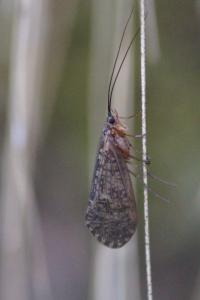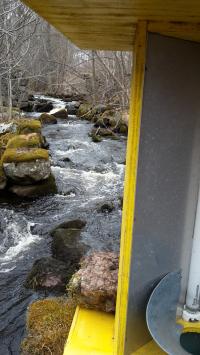Introduction

It is a well-known fact that some insects fly to light and they do not only use light for navigation; it affects feeding behaviour and functions as a cue for predator avoidance and oviposition. So what happens to them when the world no longer becomes fully dark at night?
Artificial light has become an integral part of urban environments and there have been rising concerns about its effect on nature. Artificial light can decrease biodiversity as it changes insects’ behaviour at night, such as reproduction and migration, and it can even have a direct lethal effect.
A suitable taxon for studying light attraction is the order Trichoptera (caddisflies). The effect of artificial light can be particularly harsh on freshwater systems as people tend to live around freshwater. Trichoptera is one of the most abundant groups of freshwater insects and, like 60% of all invertebrates, many of them are nocturnal.

Aim
The aim of this study was to investigate how artificial light can influence Trichoptera species and their sex ratio. Are Trichoptera species attracted to light? Is one sex more attracted to light than the other? Are day-active species less attracted to light?
Furthermore, the study investigated if longer nights lead to a larger light trap catch. In northern Europe, nights can vary from being completely dark to completely light (due to midnight sun), depending on season and geographical location (latitude). This makes the region ideal for surveying the effect of the nights’ length on the phenomenon of light attraction. As a light trap mainly attracts insects during darkness the effects of artificial light should be smaller during brighter nights and there should be larger catches the longer the period of darkness.
Responsible for this page:
Director of undergraduate studies Biology
Last updated:
04/25/17
